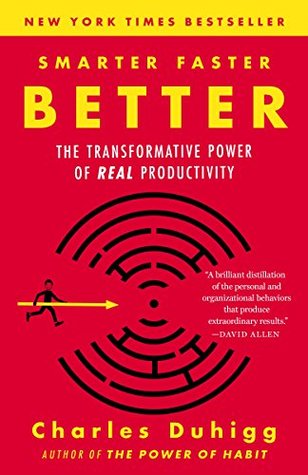More on this book
Community
Kindle Notes & Highlights
They were all behaviors that created a sense of togetherness while also encouraging people to take a chance.
Psychological safety is a “shared belief, held by members of a team, that the group is a safe place for taking risks.”
they convinced a midsized recruiting firm to give
dramatic,” wrote Jeff Sutherland, one of the authors of
Many of our most important decisions are, in fact, attempts to forecast the future.
but forecasting is an imprecise, often terrifying, science because it forces us to confront how much we don’t know. The paradox of learning how to make better decisions is that it requires
We become trained, in other words, to notice success and then, as a result, we predict successful outcomes too often because we’re relying on experiences and assumptions that are biased toward all the successes we’ve seen—rather than the failures we’ve overlooked. Many
making good predictions relies on realistic assumptions,
“The best entrepreneurs are acutely conscious of the risks that come from only talking to people who have succeeded,”
Making good choices relies on forecasting the future. Accurate forecasting requires exposing ourselves to as many successes and disappointments as possible.
How do we learn to make better decisions? In part, by training ourselves to think probabilistically. To do that, we must force ourselves to envision various futures—to hold contradictory scenarios in our minds simultaneously—and then expose ourselves to a wide spectrum of successes and failures to develop an intuition about which forecasts are more or less likely to come true.
productivity of the creative process,”
“Combinations of existing material are centerpieces in theories of creativity,
“The highest-impact science is primarily grounded in exceptionally conventional combinations of prior work yet simultaneously features an intrusion of unusual combinations.” It was this combination of ideas, rather than the ideas themselves,
today’s Internet social networking companies grew when software programmers borrowed public health models that were originally developed to explain how viruses spread and applying them to how friends share updates.
“A lot of the people we think of as exceptionally creative are essentially intellectual middlemen,” said Uzzi. “They’ve learned how to transfer knowledge between different industries or groups.
anyone can become an idea broker: by drawing on their own lives as creative fodder. We all have a natural instinct to overlook our emotions as creative material.
“Creativity is just connecting things,”
People become creative brokers, in other words, when they learn to pay attention to how things make them react and feel.
Those inventors looked to their own lives as the raw materials for innovation.
“local species diversity is maximized when ecological disturbance is neither too rare nor too frequent.”
When strong ideas take root, they can sometimes crowd out competitors so thoroughly that alternatives can’t prosper. So sometimes the best way to spark creativity is by disturbing things just enough to let some light through.
We can create the conditions that help creativity to flourish. We know, for example, that innovation becomes more likely when old ideas are mixed in new ways. We know the odds of success go up when brokers—people with fresh, different perspectives, who have seen ideas in a variety of settings—draw on the diversity within their heads. We know that, sometimes, a little disturbance can help jolt us out of the ruts that even the most creative thinkers fall into, as long as those shake-ups are the right size. If
First, be sensitive to your own experiences. Pay attention to how things make you think and feel. That’s how we distinguish clichés from true insights. As Steve Jobs put it, the best designers are those who “have thought more about their experiences than other people.”
Second, recognize that the panic and stress you feel as you try to create isn’t a sign that everything is falling apart. Rather, it’s the condition that helps make us flexible enough to seize something new. Creative desperation can be critical; anxiety is what often pushes us to see old ideas in new ways.
It is critical to maintain some distance from what we create. Without self-criticism, without tension, one idea can quickly crowd out competitors. But we can regain that critical distance by forcing ourselves to critique what we’ve already done, by making ourselves look at it from a completely different perspective, by changing the power dynamics in the room or giving new authority to someone who didn’t have it before.
“Creativity is just problem solving,”
data can be transformative, but only if people know how to use it.
They had to be forced to interact with data until it influenced how they behaved.
set aside those slick data tools and fancy software—and were told instead to start manipulating information by hand.
information blindness refers to our mind’s tendency to stop absorbing data when there’s too much to take in.
Productivity is about recognizing choices that other people often overlook. It’s about making certain decisions in certain ways. The way we choose to see our own lives; the stories we tell ourselves, and the goals we push ourselves to spell out in detail;


